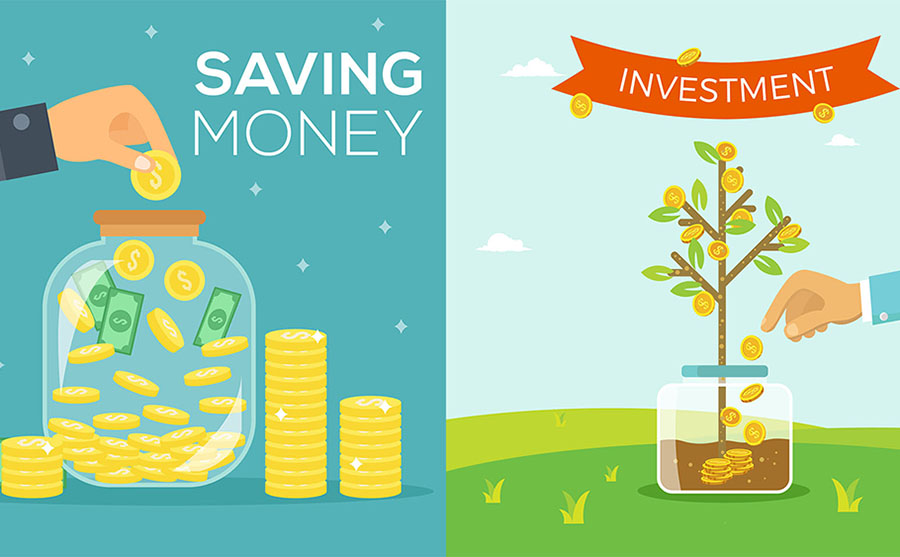The two words are often confused and used interchangeably, do these two words denote the same thing? What is the relationship? Saving as a verb, has got a bad rap, I have read people say, “you cannot save your way to prosperity” and point to inflation that wipes away returns, but perhaps we have misunderstood the purpose of savings. Without a clear understanding of the purpose of saving, then its usage will be suboptimal at best
Saving is essentially mathematics; Saving is income less consumption. For instance, you earn N10,000 you spend N9,000, you have automatically saved N1,000. Where or how you hold that N1000 is not material in terms of Saving, all we know is that you have not consumed all your income. The purpose of saving is to generate investible income by reduces consumption.
Read Also: A closer look at the Retirement Savings Account (RSAs)
The measurable goal of savings is to increase our Savings Rate. Back to our math, if you have N1000, and you want to buy a bow tie you can find one for N10, N100 or N1000. The person who buys bowties for N10 will have a higher saving rates (not income) than the person who buys a bowtie for N1000. Saving rate is NOT a function of income earned but how much of that income is saved. To illustrate: income N10,000, Spending N9000, saving rate is (Income -Spending)/Income
Then multiply to make a percentage i.e. (10,000-9000)/10000 =10%
In the context of retirement, a higher savings rate can translate to building up a pool of income which can be saved as Additional Voluntary Contributions, allowing the contributor reach retirement income goal faster.
(READ MORE: How to know when your debts have gone overboard)
Question: if you borrow N10,000 and save N5000 of it have I saved? No. why? Because savings rate when you borrow is already 0% because the initial borrowing is already a consumption. When you borrow, you are simply spending future income. Hence, you technically cannot borrow and then save those same funds.

What then is investing? Investing is the deliberate action of deploying saved income in a planned manner to reach a predetermined objective.
There can be no investing without saving. Investing in art, it starts with asking and answering questions about future objectives e.g. When do you want to retire? The answers to these questions, assist in creating an investing plan. The investing plan selects assets that match objectives to returns and risk in an asset allocation schedule. Investing will also consider many environmental factors like inflation that are systematic to all portfolios.
Back to our example, of the RSA, let’s assume Peter and Paul both earn the same income of N75,000 and both have Retirement Savings Account (RSA) with the same PFA paying 6% p.a. On their RSA unit trust, but Paul has a 10% savings rate and Peter a 25% savings rate. After 15yers assuming all savings are invested in the RSA, then Peter would have saved just under N200,000 but Paul’s RSA would be worth close to N430,000. The lesson is that saving, REDUCES spending, and sets a lower threshold for expenses. In other words, buying a tie for N100, instead of N1000, not only frees up N900 to be invested it also reduces the overall expenses level. Reducing the expense level means the saver has a lower threshold to reach before earning enough from passive income to cover Non-Discretionary expenses.
(READ MORE: Wealth.ng & Paga Partner to bring Wealth Investment to Everyone)
In other words, instead of just focusing on investment return, investors should also focus on spending, bringing spending under control within set budgets. If an investor has a financial goal of buying a home in five years and has accumulated capital to invest and grow to deploy as a down payment for the home in future, then the first consideration is not which asset classes to invest in but how to consistently generate more savings to be available for investment.
The next step is then to allocate those saving in a manner that seeks to profit from volatility i.e. risk that generates real returns, while also hedging to avoid significant capital loss. These investments must be set up in a manner that allows future deposits to take advantage of cost averaging.
There can be no investment without savings.























Nice piece. I very much align with the views shared and have been practicing this for years.
I’ve seen people who earn much more than I do get into financial dire straits just because they fail to properly manage what comes in
This is financial literacy 101